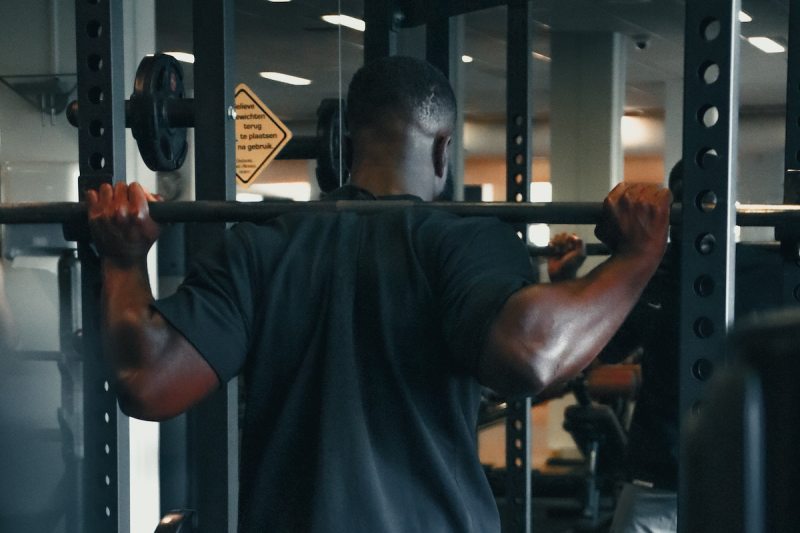
Strength training (also referred to as weightlifting or resistance training) involves more than just building muscle. Getting stronger is certainly a plus, but there are numerous benefits to strength training beyond that. And whether you are a gym goer or you prefer outdoor workouts or exercising at home, you can participate in this activity. You don’t need a ton of expensive equipment; general resistance is the only thing required.
In fact, any form of resistance works, from dumbbells to barbells, kettlebells to weight machines, and resistance bands to just your own body weight. The key is just to place your muscles under a load.
A good set of resistance bands, adjustable dumbbells, or even a TRX suspension trainer can be all you need at home to get in a challenging, total-body strengthening workout. If you’ve been counting yourself out of strength training workouts because the gym just isn’t your scene or you’ve been reluctant to venture over from the cardio equipment at your gym to the weights, keep reading for a list of the benefits of strength training, which may be just the inspiration you may need to diversify your workout routine and take your fitness to new levels.
Benefits of strength training
In addition to its versatility and convenience, strength training is an efficient and effective workout that provides a variety of physical and mental health benefits, including the following.

Strength training strengthens muscles and connective tissues
The first one is straightforward: strength training makes your muscles, tendons, and ligaments stronger. By requiring your muscles to work against a load, they develop more strength, which can make everything easier, from running a marathon or sprinting down the court to sink a layup to carrying a bag of groceries up the stairs.
Strength training builds lean body mass
Particularly if you are lifting for hypertrophy, which refers to increasing muscle size and involves lifting heavy weights or working under high loads, strength training can build lean body mass. Putting on muscle can not only look good and cause favorable shifts in your body composition, but it also improves markers of health, increases your metabolic rate, and makes you stronger and fitter.
Strength training reduces body fat

Like all forms of exercise, strength training burns calories, but the main metabolic payoff is building lean muscle mass. When this happens, strength training helps increase your metabolic rate. Because your muscle mass is the primary determinant of your metabolic rate, putting on more muscle helps you burn more calories in a day, even at rest.
Because of these beneficial body composition changes, weight training is one of the best forms of exercise for those looking to reduce body fat. Studies have found that 8-12 week strength training programs are usually just as effective— if not more so — at reducing waist circumference and body fat percentage as long-duration cardio exercise workout routines.
Strength training increases bone density
Increasing your bone density is critical for the prevention of fractures, particularly as you age. Strength training loads the bones, which signals them to lie down a denser, more mineralized bony matrix. Furthermore, when stronger muscles contract, they pull more forcefully on the bones, which also signals your body to deposit more minerals and strengthen the structure of your bones and create new bone cells.
Strength training helps prevent injuries

Strength training reduces the risk of overuse injuries from other sports (running, cycling, tennis, swimming, basketball, etc.) as well as activities of daily living because it strengthens your muscles, tendons, joints, ligaments, and bones. Building muscular strength allows the muscles and tendons to absorb more of the forces involved when you land during each step, running stride, or jump, removing undue stress that your bones and cartilage absorb when otherwise weak muscles fatigue.
Strength training improves neuromuscular control
Some of the greatest initial gains in muscular strength after embarking on a strength training program are actually due to enhancements in the communication between the brain and the muscles via nervous impulses. Strength training helps your brain and muscles coordinate their activities such that a greater number of muscle fibers are recruited with an impulse from the brain, and they contract in a more coordinated fashion. This makes for more forceful contractions. This can also translate to overall improvements in coordination and muscle control, whether taking on fine motor skills or large, gross movement patterns.
Strength increases core strength

Particularly when you perform unilateral exercises, such as a single-arm farmer’s carry or a rear-elevated Bulgarian split squat with a lateral rotation, strength training can improve core strength. Your core muscles, which include the abs, obliques, hip muscles, and lower back muscles, connect the upper body and lower body muscles and are instrumental in movement efficiency.
Strength training boosts athletic performance, speed, power, efficiency, and economy
By increasing strength, power, force generation, coordination, core strength, and balance, strength training increases your overall athletic performance, movement efficiency, and
Strength training can improve markers of health

Studies have demonstrated the ability of strength training workout programs to improve numerous markers of health. For example, resistance training programs have been shown to lower blood pressure, improve blood sugar control, and decrease triglycerides and cholesterol.
Strength training can optimize hormonal balance
Strength training can improve your hormonal balance by stimulating the production of hormones like testosterone and growth hormone and inhibiting stress hormones like cortisol, which, when high, can contribute to weight gain.
Strength training can boost your mood and reduce anxiety

All forms of exercise produce endorphins, the feel-good chemicals that can elevate your mood. It’s also a great way to relieve stress and anxiety, as it has been shown to reduce stress hormone levels.
Strength training can increase your confidence
Let’s face it, when you feel good about your body, you walk around with confidence and a little more swagger. As you get stronger, you feel better about yourself, and that can carry through into all areas of your life, from workouts to work to relationships.
Strength training can help you sleep better
Would you believe that one of the benefits of resistance training is better sleep? Strength training can promote better sleep in a couple of ways. It challenges your muscles, leading to a healthy level of tiredness. This fatigue promotes a natural desire for sleep, making it easier to drift off and potentially sleep more soundly. Strength training is also thought to influence the production of adenosine, a chemical that promotes drowsiness. As your muscles work during exercise, adenosine levels rise, signaling to your body that it’s time to wind down.



